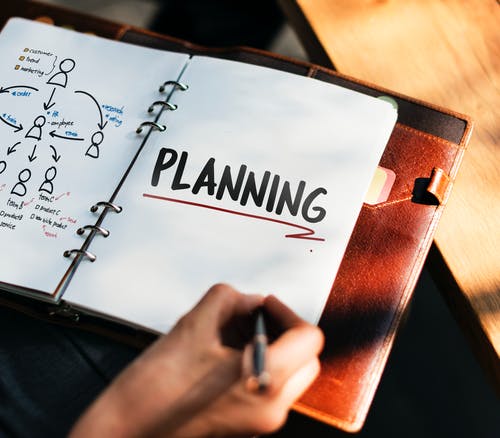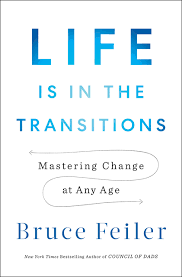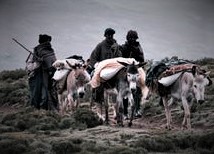
Jan 26, 2021
Is your glass half-full or half-empty? Does your answer depend on your circumstances?
It was only when I read Heidi Grant Halvorson’s 2010 book Succeed: How We Can Reach Our Goals that I came to understand some of the advantages that pessimists have in reaching their goals. Dr. Halvorson, a professor and researcher at Columbia University, is an expert in Social Psychology. In this book she reports the results of experiments, her own and those of others.
Full disclosure: I have always defined myself as an optimist, not a pessimist. I am eager to try new things, and I pursue them with a passion. I also wake up early in the morning eager to start the next day. My wife calls me a “sometimes obnoxious optimist” because of my (overly) hopeful and energetic disposition.
Pessimists’ fundamental belief is that the world is full of danger. Therefore, a pessimist will have goals to prevent bad things from happening. Here are some positive features of pessimism that Dr. Halvorson reports:
- Fear of loss motivates pessimists to work to lessen danger. When their efforts succeed, they are relieved, calm and relaxed.
- Pessimists are cautious, because they want to avoid mistakes. They aren’t procrastinators, they don’t let things slip through the cracks. They will plan and work to avoid the worst outcomes.
- Pessimists are detail-oriented and value accuracy over speed. They are focused and perform better than optimists when there are distractions and temptations.
Clearly, there are times and situations when optimism will work better and others when pessimism is more appropriate. In particular, when there is real and severe danger, then the pessimistic approach will work better. Our challenge then is to determine which approach is more appropriate in each situation we find ourselves in.
Do you see yourself as an optimist, a pessimist, or some of both?

Jan 12, 2021
The party was for 500 of us on Zoom. It was a social event during the first week of class, so that we could get to know each other. In the Zoom meeting we each rotated from one breakout room to another, fifteen new people at a time. We introduced ourselves. We told why we were taking the class.
I was on a mission. I listened carefully. I wanted to recruit a few of the most eager partygoers to join me in a Study Group. The idea was that we would meet periodically to discuss ideas from the class and to help each other in our ventures.
We formed our group. Weekly we met to share ideas from the class and support one another. It worked.
Last week our Study Group had been meeting for seven months. I was going through a tough time. My ambitions had grown – I wanted to conquer the world – now. I was getting more and more frustrated. There was a huge gap between where I was and where I wanted to be. I knew that meditation would help, but I had never been able to do that.
How could I get rid of the pit in my stomach? Why not just spread out my most urgent tasks over the first quarter of the year? I worked backwards from where I wanted to be at the end. When I did this, it seemed like I had to get nearly everything done right now, immediately, in the first week.
My Study Group was meeting. I couldn’t contain myself. I burst out what was going on, the importance of it all and the tremendous anxiety I felt. Arlene (her real name) is in my group. She is my junior by more than 20 years and is very wise. Arlene asked, “Why do you need to get it all done by the end of the quarter?” I didn’t know what to say. She continued, “So what if you don’t get all of this week’s tasks done? Why can’t you work on your own schedule and just do what you can do?”
I had no answer, at least not any good answer. I was stunned. I calmed down. Yea, Arlene.
What strategies do you use when everything is urgent?

Dec 21, 2020
Covid 19 has been an enormous disruptor for most people in the entire world – a change from what we’ve been doing and perhaps expecting to do. The normal expectation is that we’ll have a linear life – that we’ll keep going in the same direction as in the past and hopefully live happily ever after. Not so now.
We’ve all experienced disruptions in the past. What are they? The most well-known list of disruptions is the Holmes-Rahe life stress inventory. It includes changes in health, relationships, beliefs, work, and identity. The list is long. Any of these can disrupt your life.
In his book “Life Is in the Transitions” Bruce Feiler describes the results of his in-depth interviews of 225 people. He found that on average people experience a disruption every 12 – 18 months.
Feiler uses the term “lifequake” to describe a serious life-changing disruption. On average people experience 3 – 5 of these in their lifetimes. The Covid 19 virus can disrupt multiple areas of our lives all at once. For many of us, it is a lifequake.
How did we handle previous disruptions and lifequakes in ourlives? We generally found a way to adapt, although in some cases it could have taken years. Here are some of the strategies that Feiler describes that people have used as they have transitioned from the “before” to the “after”:
- Moving from resistance to acceptance of the new situation (think of the 12-step program)
- Dealing with emotions – fears of different kinds
- Giving up old mind-sets, being creative, and trying new things (including writing/journaling)
- Ritualizing change – marking an end and beginning
- Launching / Unveiling your new self and composing a new story for your new life
Many of these transitions, especially if they result from lifequakes, can take considerable time to accomplish. They are facilitated by help and support from others.
Are you in a lifequake now? What do you plan to do about it?

Dec 14, 2020
Will you have enough money for your retirement? Well, it depends on what you want to do in retirement and what that will cost. But there is more to the question than that.
There is a numerical approach to answering this question. When I was a financial planner, I helped people do the calculations. They wanted to know how long their money would last, based on their savings, investments, Social Security, and their future spending plans.
How much retirement income will you be able to draw from your investments? The calculations that I did used historic investment returns, taking their past variability into account. The result was a probability – the chances that there will be enough to last a lifetime.
When the calculation is all done, you still have to take your tolerance for risk into account. What if there were a 95% chance of your money lasting? That would mean a 5% chance that it wouldn’t. For some people 95% sounded great; for others, not so much. And if the chance of having enough were less, say 80 – 90%, what then? Or if it were more, such as 99%?
The numbers in a calculation about the future go only so far. You have to eat every day to survive, even during a pandemic when the possibility or reality of having less income can be quite real. Having a cash reserve available can be extremely helpful, pandemic or not, but that is based on your past behavior of putting “extra” money aside. You can only make decisions about what you do now for the future.
Having gratitude, faith, and hope helps to manage anxiety. The reality is that whether you are optimistic or pessimistic, life will go its own way. There will always be change and surprises to accommodate to – some negative, some positive.
A life driven by pessimism and fear is not much fun. I prefer to be an optimist. Having a positive attitude lets me participate in and enjoy life more fully along the way, however it all turns out.
What is your attitude about having enough for the future?

Dec 8, 2020
The pandemic is an excellent time to build your tribe. It is easy to feel isolated now when we are physically separate from friends and relatives. The isolation may motivate us to take action.
Historically, a tribe was a community related by geography, genetics, or history. In this internet age a tribe has come to mean people with common interests and values who use a shared vocabulary to communicate.
I take the notion of a tribe personally. I like to think of a tribe as people I know on a common journey, a network of like-minded people.
My tribe is comprised of people who accept and respect me for who I am. They care. They listen to what I have to say, yet challenge me when that is appropriate. They have similar morals and values or a similar history or interests to mine. Our conversations are easy and meaningful.
I have the same responsibility for them, including listening, accepting, and supporting them.
Building my tribe has not been easy, but it is worth it. My antennae are always out looking for candidates whom I can recruit. I will use Zoom to meet and greet them and invite them to be part of it.
Once they are members, I dedicate my time to building the relationship through periodic meetings. Or else we drift apart. Connecting doesn’t happen by itself. It requires time energy, and commitment. But the benefits are terrific – acceptance of who we are and companions in our journeys through life. My tribe can always use some more members.
What can you do to make more connections and build your own tribe?

Dec 1, 2020
Decluttering should be easy. We know at some level that less is more, and we may well have the time now to go through our things during the pandemic. Ultimately, we or someone else will have to dispose of all of our worldly goods, and we may not want to put that on someone else’s shoulders. So why not just do it?
It reminds me of the advice to lose weight. It’s simple – eat less and exercise more. But it’s hard to do, in part because our bodies have evolved to hoard food internally. That way we won’t starve to death if food were to get very scarce. We also hoard food in our cabinets, clothes, furniture, etc. so that we will have things handy if we need them later. We accumulate stuff faster than we use or dispose of it.
Nevertheless, it is possible to make progress in decluttering. My wife and I did this when we moved from our larger suburban home to a smaller downtown apartment a year and a half ago. Here is what we learned during that process.
We knew that our choices were to keep, sell, throw away, or give away our excess stuff. Our process was to ask ourselves – what don’t we really need? We also found ourselves asking – what is the best use of each item? Here are two examples of how those questions informed our actions.
My wife stored much of her art in the basement. She did not expect to display most of it for the foreseeable future. She could sell a small number of pieces, but that would take considerable time and energy. So, she invited friends and neighbors to an art giveaway. She gave away 300 pieces of art in 45 minutes on our back porch. Not only were friends excited to receive the art, but she also felt joyful afterwards knowing that her art would be appreciated by so many people in their own homes.
We disposed of extra clothes and household items through Goodwill. Also, since I knew that I would not need household tools in our new place where household maintenance was part of our rent, I donated them to Minnesota Tool Library where I knew that they would be used over and over again by others.
Every item to be evaluated was a thoughtful decision. Decluttering was exhausting. We found it easier to spread it out over time. Mornings worked well when we had more energy to make the decisions.
Now that we have moved and put our stuff away, we conclude that we were not tough enough. We are planning to do more decluttering this winter when we will not be able to go outdoors as much. We are also now more mindful and careful about what we accumulate so that we can manage better how much stuff we keep around.
How would your life be different if your home were more decluttered? Whom can you give joy to by giving stuff away?






